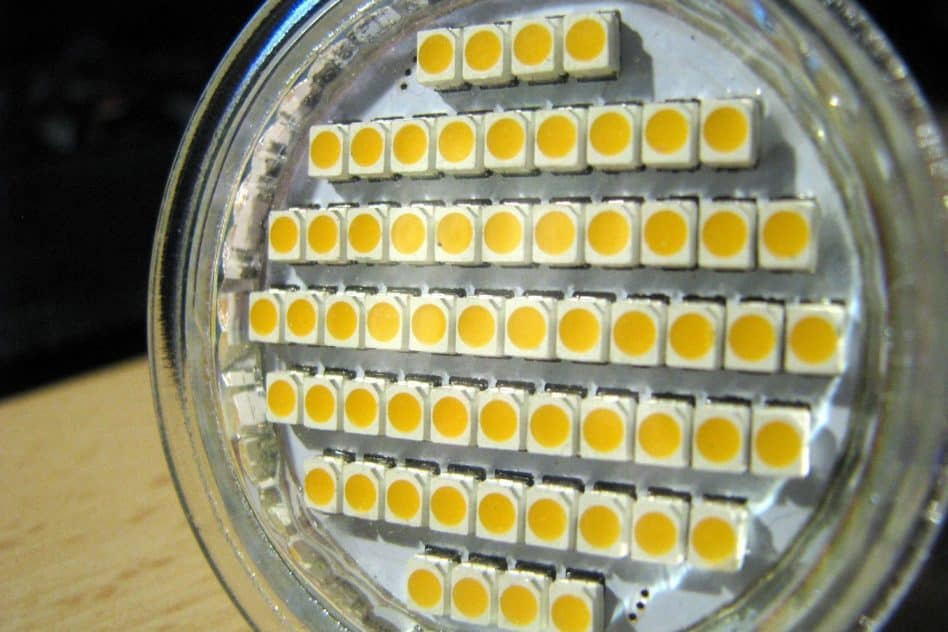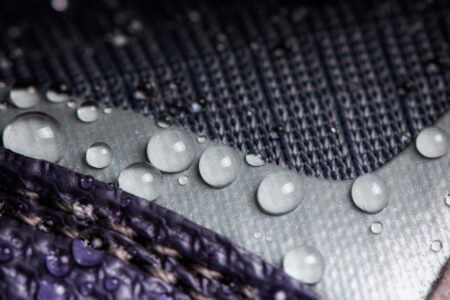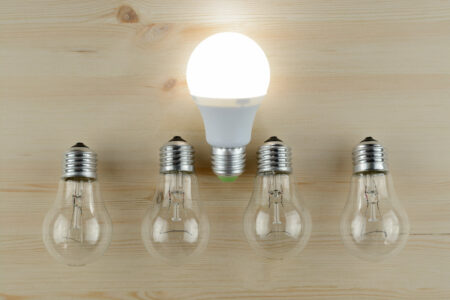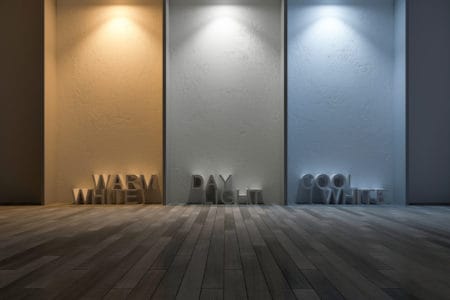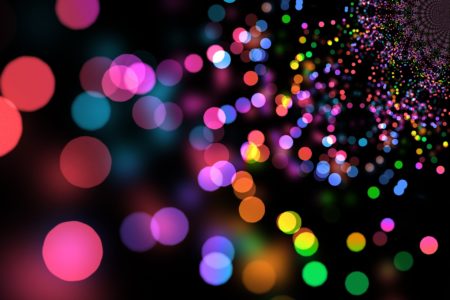Modern LED technology is the future light source. In this article you will find out the top 10 advantages of LED lights compared to conventional halogen or energy-saving lamps. You will also see if there are any drawbacks or disadvantages with LEDs.
Benefits of LED lighting
In the past, the classic incandescent lamp was the only light source in the household. Because of their poor efficiency, these have gradually disappeared from the market. Halogen lamps and, a little later, energy-saving lamps came on the market as successors. These were somewhat more efficient, but brought many new disadvantages.
With the breakthrough of LED technology a modern and future-proof light source came onto the market. Here are the 10 advantages of current LED lighting:
1. Very long lifespan
The well-known incandescent lamp had a lifespan of only 1,000 to 2,000 hours. Halogen lamps lasted about 4,000 hours and energy-saving lamps up to 10,000 hours. The regular replacement of defective lamps was a standard procedure.
LED lamps, on the other hand, have a very long lifespan. This is at least 15,000 hours even with inexpensive LED lights. LEDs of better quality last between 20,000 and 50,000 hours. The exact lifespan should always be printed on the package.
With an average burn time of 4 hours per day, even the cheap LED lamp would last 10 years. The luminaire with a lifespan of 50,000 hours would even last 34 years. The regular re-purchase and replacement of defective lamps is no longer necessary.
2. Low power consumption
The luminous efficacy of current LED lamps is around 80 – 100 lm/W (lumens per watt). Some high-power LEDs even reach over 300 lm/W. Halogen lamps only deliver about 12 lm/W. Thanks to this high efficiency of the LED technology, energy consumption is 6 to 8 times lower.
An example: To replace an old ceiling light including a 100 watt lamp, an LED light with only 12 to 16 watts is sufficient. If this is added up to the entire household, enormous electricity costs can be saved every year.
3. High shock resistance
In contrast to halogen or energy-saving lamps, LED lamps are very insensitive to shocks. This is less important with permanently installed ceiling luminaires. However, this is a great advantage for all movable luminaires and spotlights. So you don’t have to worry about adjusting or panning them when turned on.
Portable LED spotlights or LED torches benefit mostly from the high shock and vibration resistance. With old halogen spotlights a careless impact was often enough for the light source to became immediately defective so it had to be replaced.
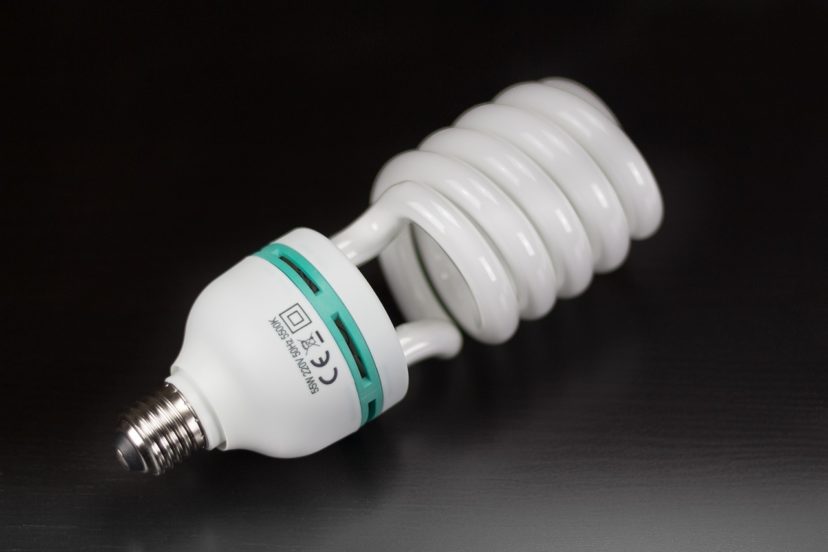
4. No danger of burning
Thanks to their high efficiency, LED lamps generate significantly less waste heat than halogen lamps. These became so hot during operation that they should not be touched. LED lamps are usually hand-warmed, so there is no risk of burns. This makes it easy, for example, to align an LED floor lamp while it is switched on.
But be careful, there are some exceptions: There are some very small but powerful LED lights. Due to their design, there is only a minimal cooling surface, where the heat loss can be dissipated. Therefore these lamps can become very hot despite LED technology and should not be touched during operation.
5. No start-up delay
Energy-saving lamps in particular often took several minutes to reach full brightness. This meant that they were unusable for all locations where the light was only turned on for a short time. These include stairwells for example. If you want to take something out of the cellar, the cellar stairs should be brightly lit immediately after pressing the light switch and not when you come back up the stairs.
This problem does not exist anymore with LED lamps. These do not flicker when switched on and light up immediately with their full brightness.
6. Adjustable brightness
In the early days of LED technology, dimmable LED lamps were the exception. There were only luminaires whose brightness could be adjusted in several steps. In the meantime, the problem no longer exists and many LED lamps can be dimmed continuously.
However, dimming an LED is technically far more complex than with a halogen lamp. It should be noted that not every LED lamp is dimmable. This must always be stated on the packaging. Also the used dimmer must be compatible for LEDs.
7. Wide range of colors
LEDs give light in all colors and there is also a wide range of white LED lamps with a huge variety of color temperatures. This allows the desired lighting mood to be created at any location.
With halogen lamps, other colors could only be produced with colored films. Cold white was not possible with halogen. If you like it colorful, you will also find so-called RGB LED lamps, which can be adjusted to the desired color at any time.

8. No pollutants
A major disadvantage of energy-saving lamps is the mercury they contain. This is highly toxic, which is why the lamps must be disposed of as hazardous waste. Another problem arises if a lamp breaks and the mercury escapes uncontrolled.
LED lamps do not contain any highly toxic pollutants, but in the event of a defect they must still be disposed of via the electrical waste due to the integrated electronics.
9. Flexible design
Due to the compact design of LEDs, a very flexible design of LED luminaires is possible. So it is possible to produce LED replacements for the familiar lamp sockets and bases. In principle, it is possible to produce any type of construction, which is why there are virtually no limits to the design of a luminaire.
10. Easy replacement
The uniform sockets make it easy to switch from halogen or energy-saving lamps to LED lamps. LED bulbs for the sockets of old lamps are often referred to as LED replacement or retrofit.
Overview of LED benefits
- Very long lifespan
- Low power consumption
- High shock resistance
- No danger of burning
- No start-up delay
- Adjustable brightness
- Wide range of colors
- No pollutants
- Flexible design
- Easy replacement
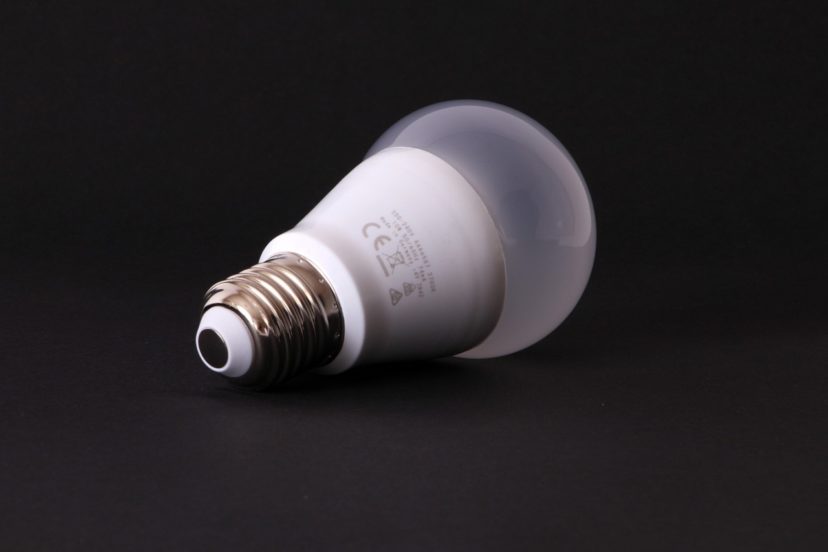
Are there any drawbacks of LED lights?
Besides the many advantages of modern LED lamps, there are also some disadvantages, at least at first glance. Compared to the many benefits these are of little importance. But for the sake of completeness these should not be missing.
Higher purchase cost
The price for a single LED light from a brand manufacturer is often 10 $ and more. Compared to the old incandescent lamps, this initially seems quite expensive. However, if one considers the many advantages of LED technology, the price relativizes very quickly.
In particular, the low energy consumption and long lifespan often make the purchase price per year even lower than with the old halogen and energy-saving lamps.
Decreasing brightness
Cheap no-name LED lamps often lose their original light intensity quickly. The lamps do not break down immediately, but the brightness decreases relatively quickly. There is no problem with well-known LED lamps. Here the brightness only decreases towards the end of the specified lifespan.
Wide variety
Buying a halogen lamp was easy. This had to fit into the corresponding lamp socket and have the required wattage for the desired brightness. You didn’t have to pay attention to much more.
LED technology is technically more complex than the old light sources. There is a very wide spectrum of LED luminaires and light bulbs with a wide variety of technical data. Depending on the location and the desired lighting mood, a number of aspects have to be taken into account:
- Brightness
- Beam angle
- Color temperature
- Dimming ability
- Energy efficiency
- Lifespan
- Switching cycles
However, the many points only seem complicated at first glance. These guides on LampHQ.com will help you choosing the right LED lamps for your desired needs.
